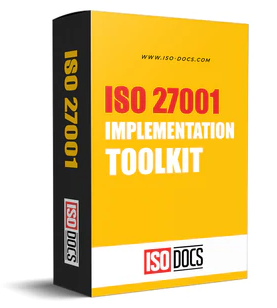Definition of the ISMS
Introduction
The Information Security Management System ISMS is the backbone of the standard ISO/IEC 27001, providing organizations with a uniform structure to protect information assets, and to manage security risks in a systematic way. ISO/IEC 27001 then sets worldwide requirements for the establishment, implementation, operation, monitoring, review, upkeep, and continuous improvement of the ISMS, thereby ensuring that data security measures are, at a minimum, comprehensive and are capable of adapting to new threats. This is where the Information Security Management System, ISMS, as articulated by the world-famous standard ISO/IEC 27001, becomes relevant. The ISMS is viewed not merely as a technical solution but as a means of providing assurance to customers, partners, and regulators that a business has a commitment to information security at all levels.

What Is An Information Security Management System?
An ISMS is a set of policies, procedures, and controls that enable an organization to systematically protect its information assets and manage associated security risks. The ISMS ensures confidentiality, integrity, and availability of sensitive information - principles fundamental to effective information security.
-
Confidentiality: Ensures data is accessible only to authorized individuals.
-
Integrity: Safeguards the accuracy and reliability of information.
-
Availability: Guarantees information is accessible when needed by authorized users.
- Authenticity and Non-repudiation: Verifies the sources of data and prevents denial of actions related to it.
ISMS and ISO/IEC 27001
ISO/IEC27001 is an international gold standard for designing, implementing, operating, and continually improving an ISMS. The standard is applicable across all industries and organization sizes, from startups to multinational corporations and public sector organizations. To achieve ISO 27001 certification, organizations must demonstrate an ISMS that thoroughly addresses the risk management, sets robust security standards, and operates on the principle of continual improvement.
Core Components Of An ISMS Standard
An effective Information Security Management System as prescribed by the ISO/IEC 27001, encompasses the following elements:
-
Leadership commitment: Active support and engagement from top management.
-
Scope definition: Determining which assets, locations, and processes are protected.
-
Risk assessment: Identifying, evaluating, and prioritizing security risks to information assets.
-
Documentation and Controls: Policies, procedures, and technical controls based on Annex A of ISO/IEC 27001.
- Ongoing evaluation: Monitoring, regular internal audits, and management reviews to ensure continual improvement and compliance.

ISMS Lifecycle: Plan-Do-Check-Act
The ISMS follows a continuous improvement cycle, often framed as Plan-Do-Check-Act (PDCA):
-
Plan: Establish security policies and objectives.
-
Do: Implement and operate the controls and processes.
-
Check: Monitor and evaluate the effectiveness of ISMS through audits and assessments.
- Act: Adapt and improve the ISMS based on feedback from monitoring.
The lifecycle philosophy not only supports regulatory compliance, but also enables organizations to proactively adjust to new threats and business challenges.
Benefits Of Implementing An Information Security Management System
a) Builds Trust: Customers, clients, and other stakeholders are pulled and kept intact with the ISO/IEC 27001 certification. As this certification exhibits the achievement and commitment of any organization obtaining this, towards data privacy and information security.
b) Strong Operational Resilience: ISMS is a structured and thoughtfully implemented standard for the organizations, starting from identifying its objectives, risk identification, risk assessments, treatment methodologies, controls implementation, ISMS evaluation etc. Hence, this ensures the operations are properly enabled with information security posture.
c) Improved Efficiency: ISMS improves the efficiency by identifying process redundancies and promoting scalable security practices.
d) Supports Regulatory Compliance: ISO/IEC 27001 standard helps organizations meet data protection laws such as GDPR, HIPAA, SOC 2, COBIT etc.
e) Enables Alignment: ISO 27001 enables the alignment or integration of information security with other standards and frameworks (NIST CSF, SOC 2, COBIT etc), thereby creating a unified security architecture.
How To Build An ISMS Infrastructure For ISO/IEC 27001
Here’s the step-by-step summary of building an ISMS that meets ISO/IEC 27001 requirements:
a) Scope definition and establishment- Define information, systems and assets covered.
b) Conduct risk assessment- Identify threats and vulnerabilities
c) Develop a risk treatment plan- Choose how to address each risk - accept, avoid, mitigate, or transfer.
d) Design and implement controls- Use ISO/IEC 27001 Annex A for guidance on technical and organizational controls.
e) Document all processes and procedures- Ensures that every aspect of ISMS is transparent and reproducible.
f) Internal audits and management reviews- Continuously assess effectiveness and drive improvements.
Conclusion
An ISO/IEC 27001-compliant ISMS is much more than an IT requirement; it is a business enablement by placing information security at the heart of the organizational culture. By embedding security-aware behavior into the manufacturing process, it enables the company to have the confidence to face new challenges, get the trust of its customers, and keep its reputation in a competing environment.

